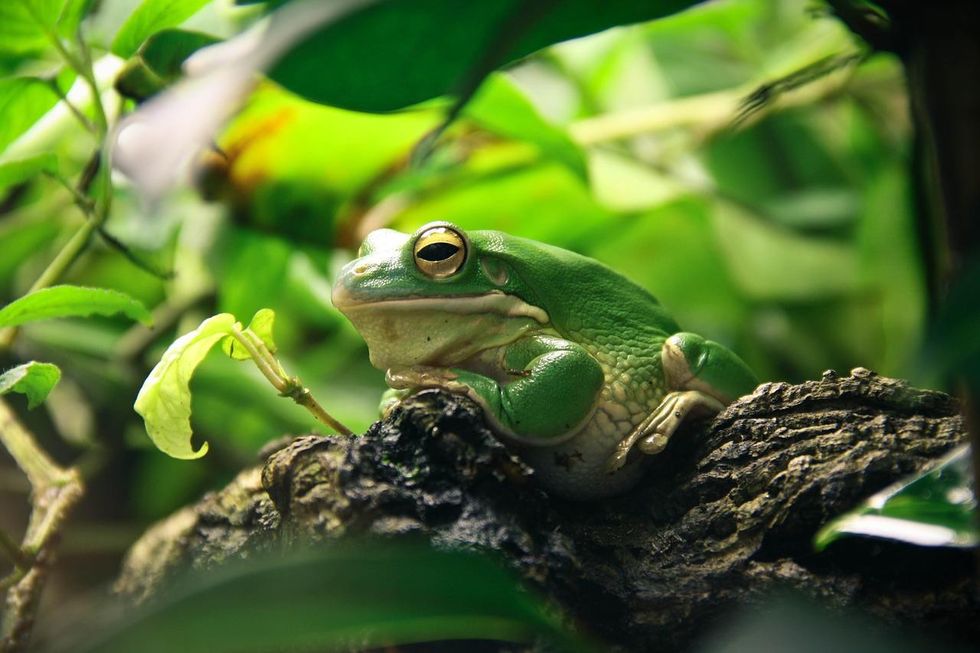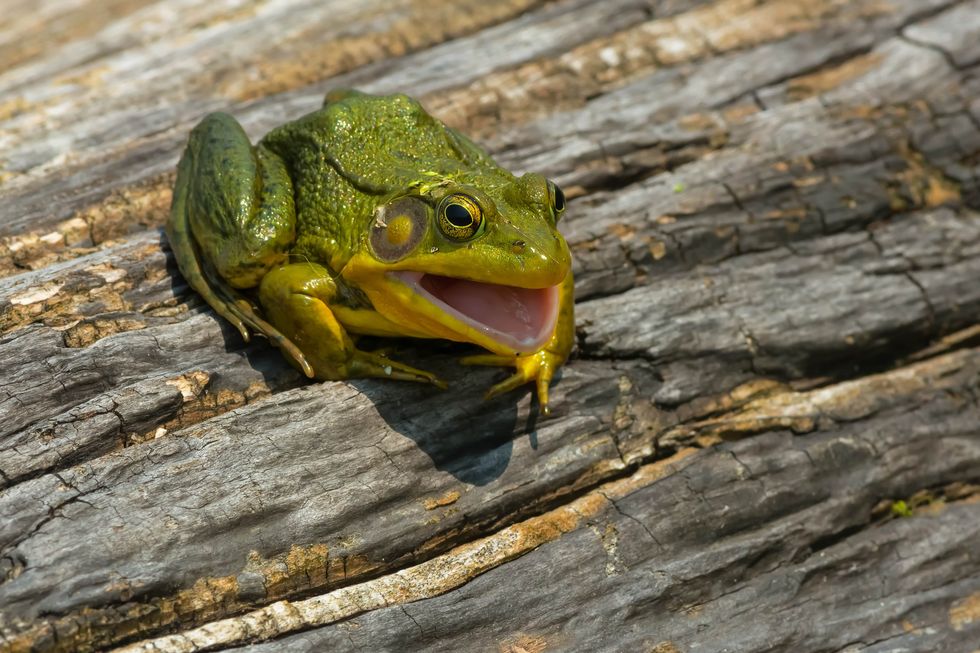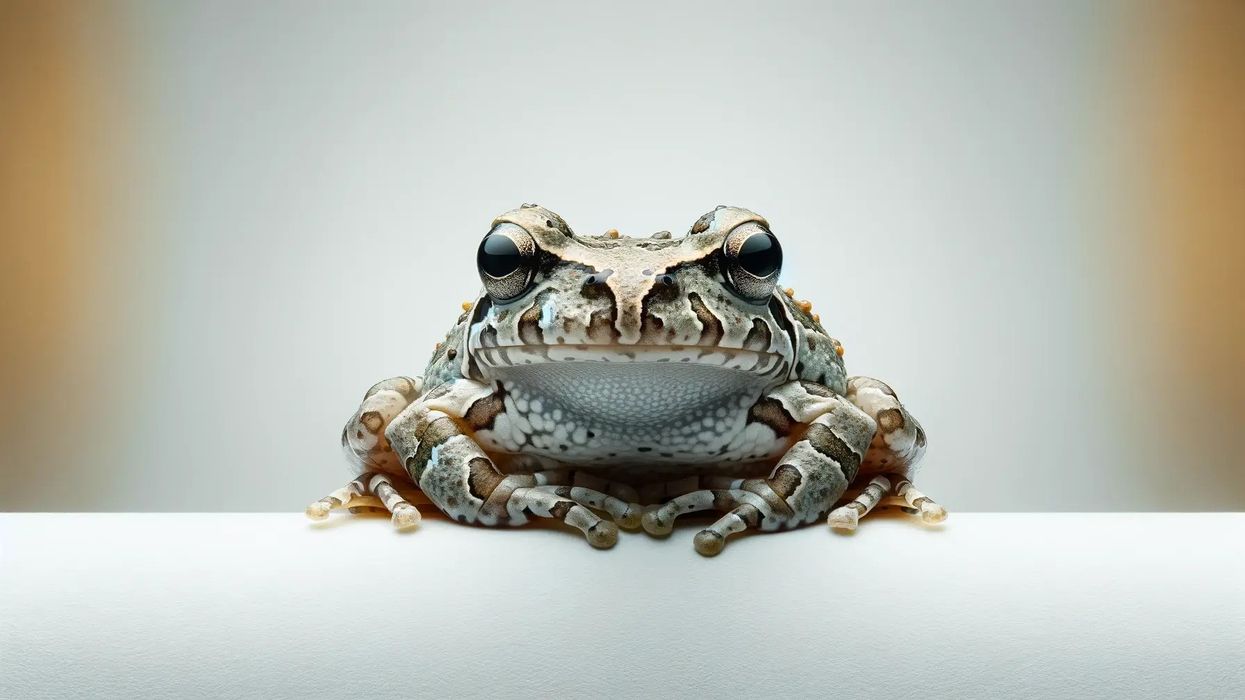The warm climate and mixed habitats in Florida have created a paradise for a wide range of frog species. Frogs play a vital role in the ecosystem by helping to keep insect populations in check and serving as a food source for many predators.
Florida's diverse amphibian population consists of both native frogs, like the southern leopard frog, and introduced species, like the cane toad, which have successfully adapted to the state's unique environments.
The presence of both native and introduced frog species in Florida creates a dynamic and complex ecosystem. Native frogs, like the southern cricket frog, the northern cricket frog, and the little grass frog, help to keep the ecological balance in check.
Get ready to gain a deeper appreciation for these amphibians and the importance of protecting their habitats.
Native Frogs Of Florida

Florida is home to a wide variety of native frog species, each contributing in their own special way to the complex web of ecosystems in the state. These amazing creatures play a crucial role in preserving the ecosystems of Florida's wetlands, forests, and marshes. Check out some of the most notable native frogs that call the Sunshine State their home.
- Southern leopard frogs are known for their distinctive leopard-like spots; these frogs are common throughout Florida's wetlands.
- Green tree frogs are bright green-colored frogs with adhesive toepads. They are commonly found in Florida's wetland habitats.
- The pig frogs are known for their unique pig-like grunting sound. These large amphibians can be found in the marshes, swamps, and lakes of Florida.
- Southern toads have varying body colors, including rusty tan, reddish-brown, and gray. They have darker spots and warty skin; they are widespread in Florida, from backyards to forests.
- Gopher frogs rely on gopher tortoise burrows and other underground refuges for shelter, highlighting a unique symbiotic relationship.
- Southern chorus frogs are small species known for their special call, which sounds like running a finger through the teeth of a comb, producing countable click sounds.
- Southern cricket frogs are small, agile frogs often found near water bodies, from ponds to streams and rivers.
- Florida bog frogs produce loud chuckle-like calls to attract a mate during the breeding season, with their calls consisting of deep sounds continuously done at five notes.
- Squirrel tree frogs are small, agile frogs known for their ability to quickly climb and escape predators.
- Pine woods tree frogs are found primarily in pine forests and adjacent habitats; these frogs are important indicators of forest health.
- Ornate chorus frogs are beautifully patterned frogs that can use their forelimbs to burrow, as opposed to most other frog species that use their hindlimbs to burrow.
- Northern cricket frogs have a relatively short lifespan of four months, and they can completely turn over their population in just six months.
- Upland chorus frogs make calls like the sound of running a finger along the teeth of a comb, a distinctive 'crrreeek' that rises in pitch towards the end.
- Little grass frogs are among the smallest of Florida's frogs. They inhabit moist grassy areas and play a significant role in the food web.
- Eastern spadefoot toads are known for their explosive breeding events following heavy rains. These toads are an important part of Florida's amphibian population.
- Eastern narrow-mouthed toads are small toads known for their pointed snouts and diet consisting mainly of ants and termites.
Introduced And Invasive Florida Frogs
There are frogs in Florida that are not originally from the state. These species have been introduced into Florida, whether on purpose or by accident, and have successfully settled in the wild. Some of these introduced species may not be a problem, but others can cause harm to native wildlife and ecosystems.
- Cane toads were introduced to control pests. Adult cane toads have become a significant invasive threat, harming native wildlife through their toxic secretions.
- Cuban tree frogs are large, invasive tree frogs that compete with native species for resources and can even prey on smaller native frogs.
- Greenhouse frogs are originally from the Caribbean. These small frogs have adapted to living in and around human houses, including greenhouses.
Fascinating Facts About Florida Frogs
 Shutterstock
ShutterstockFlorida frogs are more than just croaks in the night; they're full of interesting behaviors and traits. Each species, from the quirky southern cricket frog to the booming pig frog, has interesting characteristics that reflect the diversity of wildlife in the state. These remarkable creatures are proof of their ability to adapt and thrive in their environments.
- Baby frogs, called tadpoles, can breathe underwater through gills before they develop lungs and become adults.
- Some frogs in Florida, like the tree frog, can change colors and patterns to blend in with their surroundings.
- The eastern spadefoot toad gets its name from its special spade-like feet, which it uses to dig holes.
- The pig frog got its name from the sound it makes, which resembles the grunting of a pig to attract the female in breeding seasons.
- Green tree frogs have sticky pads on their toes that help them climb trees and other surfaces.
- The oak toad is one of the smallest frogs in Florida, measuring only about 0.75-1.25 in (1.9-3.3 cm).
- Southern leopard frogs have beautiful spots that resemble the patterns on a leopard's coat. They have a green to tan/brown coloration with dark spots on their backs and legs.
- Barking tree frogs make calls that sound like a dog's bark during the breeding season to attract females, which can be heard from far away.
- Some Florida frogs, like the southern cricket frog, can jump up to 8 ft (244 cm) in a single leap.
- Florida frogs come in many colors, like green, brown, gray, and even yellow or orange.
- Frogs can puff up their bodies to make themselves look bigger and scarier to predators.
- Many Florida frogs are more active at night, which is when you can hear them calling.
- The little grass frog is so tiny that it can fit on your fingernail.
- The pine woods tree frogs have yellowish-orange spots on the back of their thighs, which are only visible when they extend their back legs.
- Cope's gray tree frog can change colors from gray to green, depending on its surroundings and temperature.
Other Interesting Facts About Florida Frogs

From the complex life cycle of the ornate chorus frog to the impressive jumping abilities of the grass frog, these amphibians never fail to captivate and contribute to the ecological story of the Sunshine State.
Whether you're a nature enthusiast or simply curious about the world around you, these amazing facts about Florida frogs will inspire a greater appreciation for the incredible diversity of life that thrives in Florida.
- Baby frogs often eat algae and other tiny bits of plant matter, which can give them a greenish color and make them look like little, swimming vegetables.
- The American bullfrog can grow up to 8 in (20.3 cm) long and weigh up to 1.5 lb (0.7 kg), making it the largest frog in North America.
- Some frogs in Florida, like the southern leopard frog, can survive in brackish water, which is a mix of saltwater and freshwater.
- Due to habitat loss, the Florida bog frog is considered a threatened species, and conservation efforts are now protecting the species.
- Frogs in Florida have special adaptations to survive the state's hot and humid climate, such as secreting mucus to keep their skin moist.
- The southern leopard frog can lay about 3,000-5,000 eggs in a breeding season, which hatch into tiny tadpoles within a few days.
- Some Florida frogs, like the pig frog and the American bullfrog, are excellent swimmers and can even catch small fish underwater.
- The southern toad secretes a toxic substance called bufotoxin from its skin that can make predators sick, helping to protect it from being eaten.
- Squirrel tree frogs can quickly change color to match their surroundings, making them difficult for predators to spot.
- The Eastern spadefoot toad is rarely seen outside of the breeding season because it spends most of its time underground.
- Little grass frogs are so small that they can hide from predators by crouching under a blade of grass.
- Frogs in Florida play a significant role in controlling insect populations. A single frog can consume up to 20 arthropods in one day and an estimated 4,800 arthropods in a single year.
- Eastern spadefoot toads have special adaptations that allow them to burrow underground to escape the heat and drought.
- The mating season for many Florida frog species is triggered by heavy rains, which create temporary pools of water for eggs to be laid and hatched.
FAQs
White lipped tree frog on branch
 White lipped tree frog on branchShutterstock
White lipped tree frog on branchShutterstock
What are the most common frogs in Florida?
The southern leopard frog and the squirrel tree frog are considered two of the most common frog species in Florida. These adaptable amphibians are widespread across the state, inhabiting a wide range of wetland habitats where their distinctive chuckling croak can be heard.
What are the tiny frogs in Florida called?
The little grass frogs in Florida never fail to capture the attention of people with their small size and powerful croaks. Even though they are among the tiniest frogs in North America, they have a big impact on the ecosystem.
What do Florida tree frogs look like?
Florida tree frogs, such as the green tree frog, have a vibrant green color and a creamy-white stripe on their sides. With their bright colors and sticky feet, they are experts at moving through the dense forests of the region.
What makes the cane toad an invasive species in Florida?
The cane toad is considered invasive because it is not native to Florida. It also negatively affects the state's ecosystems. The species competes with native frogs for resources and has a defense mechanism that can harm local wildlife, leading to disturbances in the ecosystem and environment.
Why are gopher tortoise burrows important to gopher frogs?
Gopher tortoise burrows are important to gopher frogs because the frogs use the burrows as a home. The burrows provide a safe place for the gopher frogs to lay their eggs and for the tadpoles to develop. Without the burrows dug by gopher tortoises, the gopher frogs would not have a suitable place to live and raise their young.
How can introduced species impact native frog populations?
Introduced species can disturb the balance of nature for the frogs that already live there. Cane toads, for instance, compete with native frogs for food and habitat, which makes it harder for the native frogs to survive. Cane toads are also toxic, so if a native frog tries to eat one, it can get very sick or even die.
How do frogs control insect populations?
Frogs play a vital role in our ecosystem by eating up a large number of insects and acting as natural pest controllers. Frogs play a crucial role in maintaining the health of human and natural environments by satisfying their appetite for insect pests. This makes them valuable in the ecosystem.
Why is the breeding season critical for frog populations?
The breeding season is an important time for frog populations as it ensures the survival of their species. In this period, frogs gather in large groups, their songs fill the habitats, and the next generation of amphibians is born, showing their importance in the ecosystem cycle.
What do you call people who study frogs?
People who study frogs are called herpetologists. Herpetologists specialize in studying reptiles and amphibians like frogs, snakes, and lizards. They learn about where different frog species live, what they eat, and how they behave in order to help protect them.
Frogs in Florida are a living example of the diversity of the natural world. Every species of Florida frog tells a unique story about adaptability, survival, and the delicate balance of the state's wildlife, from the invading cane toads disrupting ecosystems to the sandy burrows that protect gopher frogs.
You'll better understand the complex web of life in Florida's environments as you learn more about the interesting lifestyles of native frogs like the bronze frog and the threatened Florida bog frog. Learning about Florida frogs will inspire you to commit to protecting the natural treasures of the Sunshine State, whether you're an aspiring herpetologist or just a curious nature lover.
Related Articles Around the Web





 Shutterstock
Shutterstock
 White lipped tree frog on branchShutterstock
White lipped tree frog on branchShutterstock




